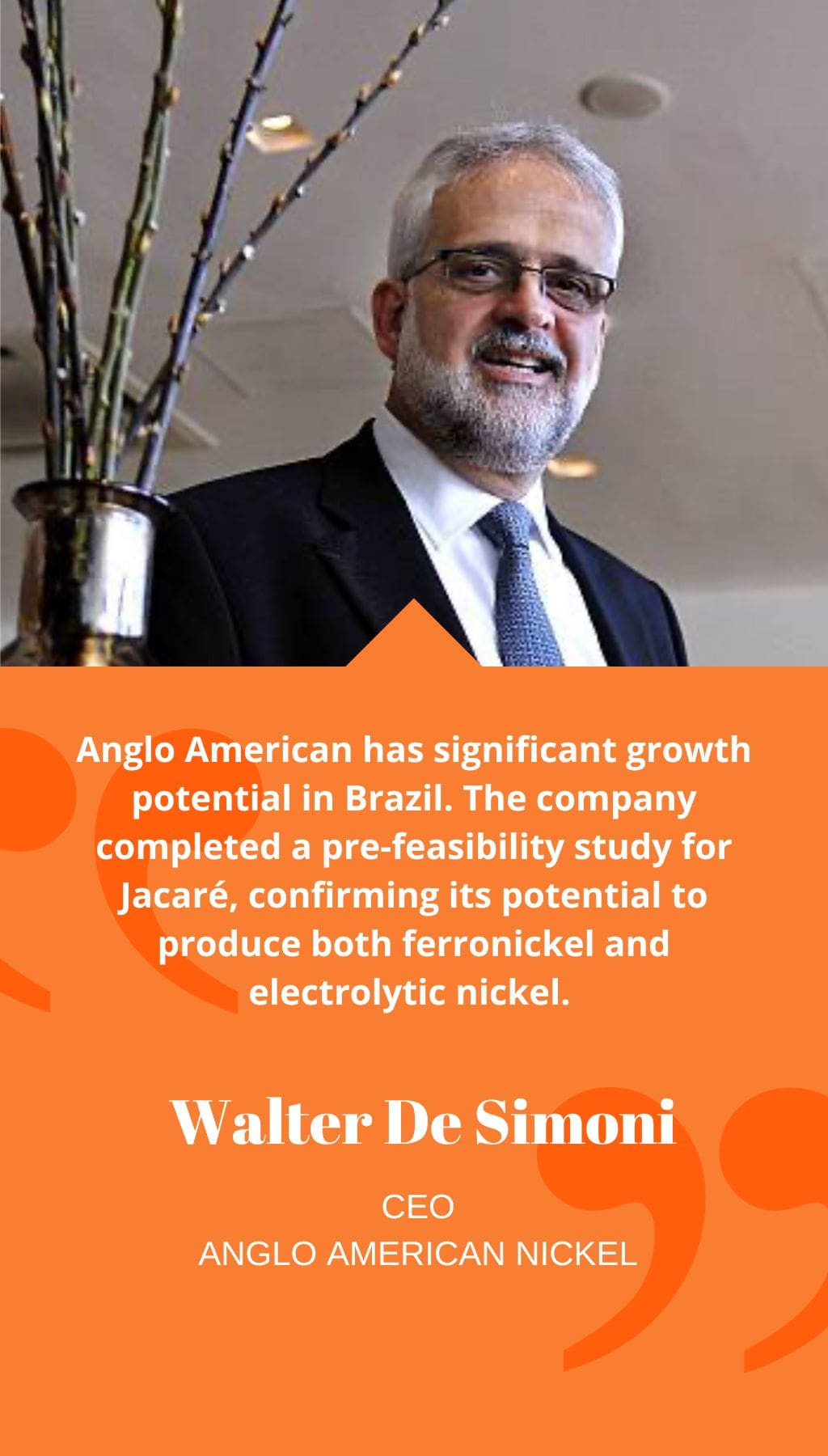
- Brazil | 27 February 2016

Can you provide an overview of the challenges faced by nickel producers in 2015 and the sector’s expected recovery?
In 2015, the nickel industry faced challenges due to the financial climate, which impacted global economic growth and, consequently, the consumption of stainless steel produced using nickel. Despite global nickel consumption increasing by 6.7% and 3.9% in 2015 and 2016, respectively, and production rising by about 6% in both years, price declines resulted in producers having year-end surpluses of 51,000 tonnes in 2015 and 33,000 tonnes in 2016. Analysts expect the demand and supply for nickel to balance out in 2013, leaving a surplus of only about 3,000 tonnes. By the end of 2014, a deficit of 12,000 tonnes of nickel is expected, which should put upward pressure on prices. Consumption is also expected to rise by 6.6% in both 2013 and 2014. However, significant variety exists among analysts’ predictions, so caution is necessary in utilizing these forecasts. Most analysts forecast a nickel deficit around 2022 to 2025, and there is a huge opportunity to increase nickel consumption globally.
Can you provide an overview of Anglo American’s Brazilian nickel mining operations at the Barro Alto and Codemin mines, including successes and challenges?
Anglo American’s nickel business in Brazil includes two operating assets, Codemin and Barro Alto. Codemin has been producing nickel for 30 years and remains a very stable operation, producing 9,600 tonnes of nickel in 2016. At Barro Alto, the company is currently facing a challenge in ramping up to nominal capacity due to problems with equipment suppliers for the kilns and electric furnaces. As a result, the company could not achieve its production target of 41,000 tonnes, producing only 26,000 tonnes in 2016. The company hopes to achieve nominal capacity rates in the near future. Overall, the Barro Alto Project has been a great success in terms of safety indicators, capital expenditure, and implementation, with a final investment of USD $1.96 billion. Barro Alto also has one of the lowest capital intensity rates of nickel projects globally.
What potential do you see at the Jacaré and Morro Sem Boné nickel mining projects for Anglo American’s future production in Brazil?
Anglo American has significant growth potential in Brazil. The company completed a pre-feasibility study for Jacaré, confirming its potential to produce both ferronickel and electrolytic nickel. The nickel business has historically been characterized by high margins, but the industry is also very capital-intensive. The company managed to significantly reduce its total investment for Jacaré, and it hopes to present the project to the Board of Anglo American in the future. The company is currently working on obtaining all the necessary environmental licenses. The company believes that both these projects present very good opportunities to increase its nickel production, but the key factor will be how they fit with Anglo American’s global strategy. At the moment, low nickel prices mean that it is not the most attractive commodity to invest in. The company’s focus for 2016 and 2017 is in Barro Alto. After the ramp-up there is finished, the company can begin to focus its efforts on new projects.














